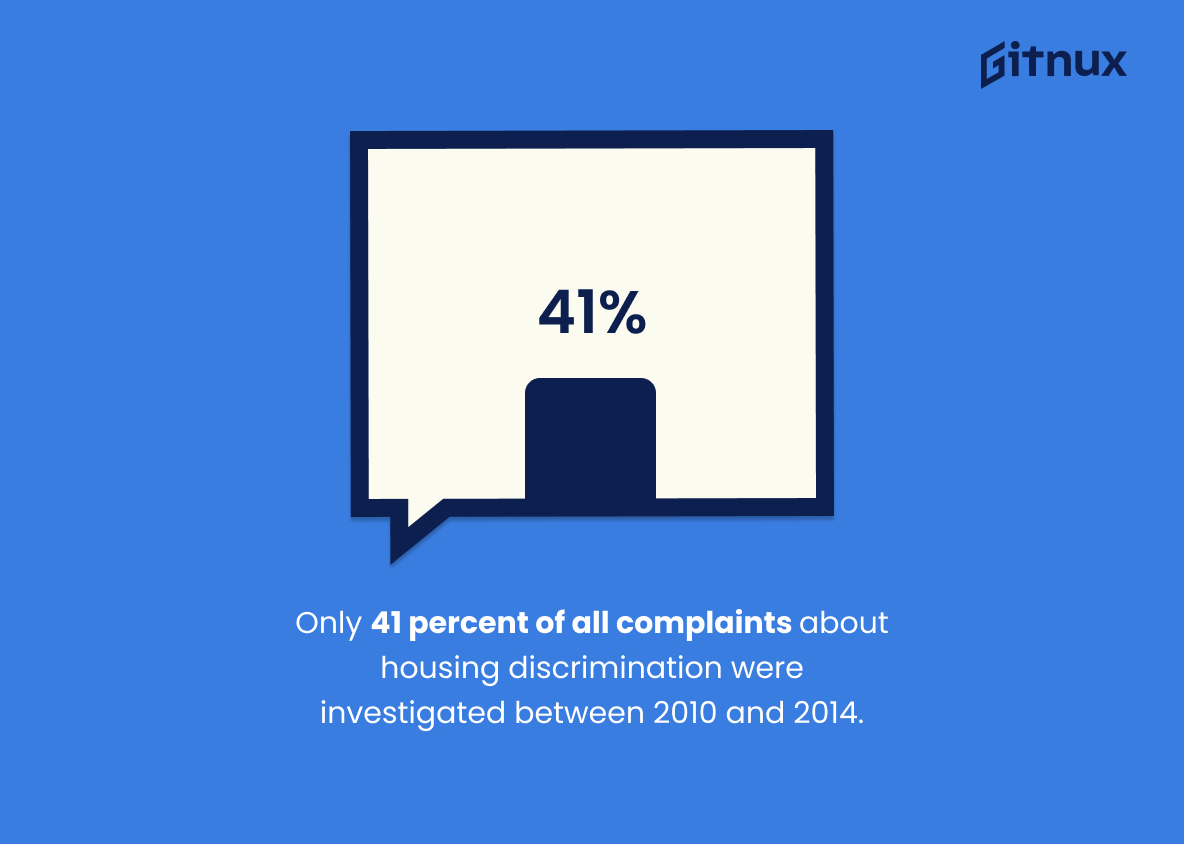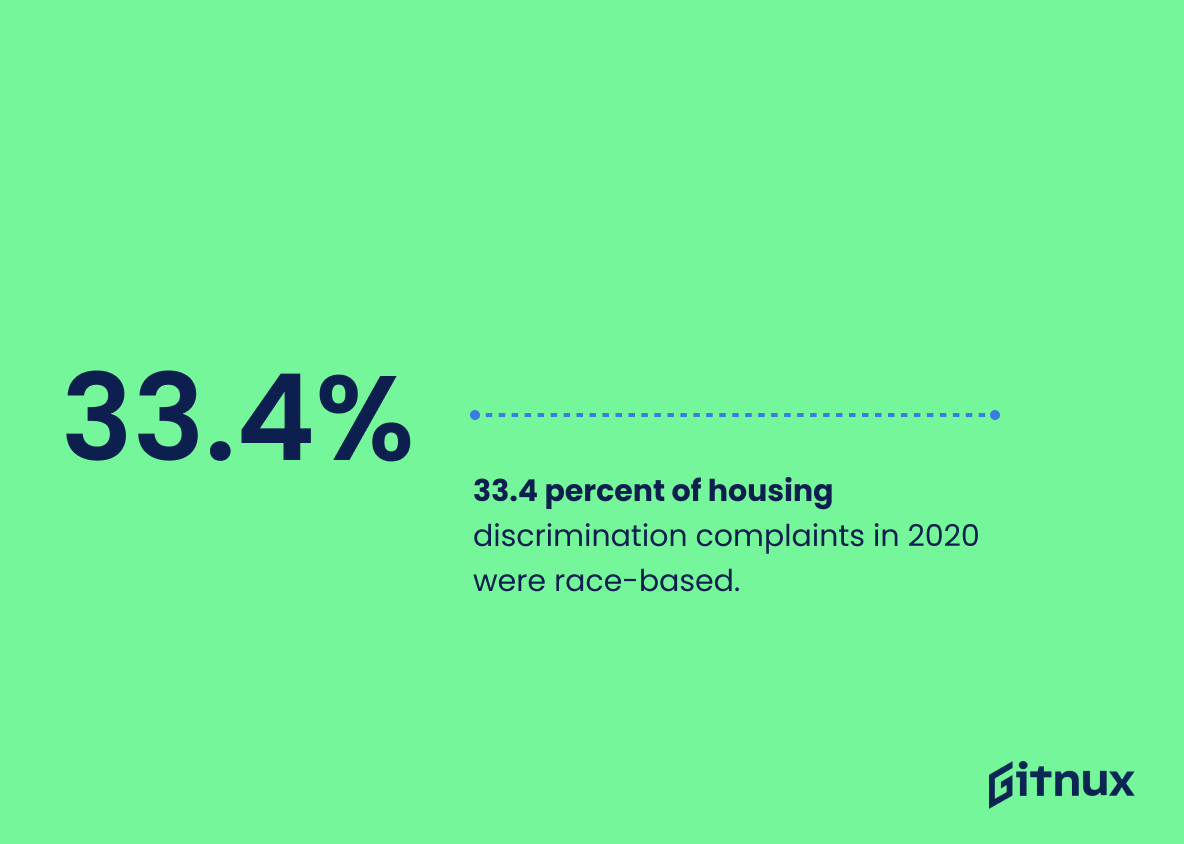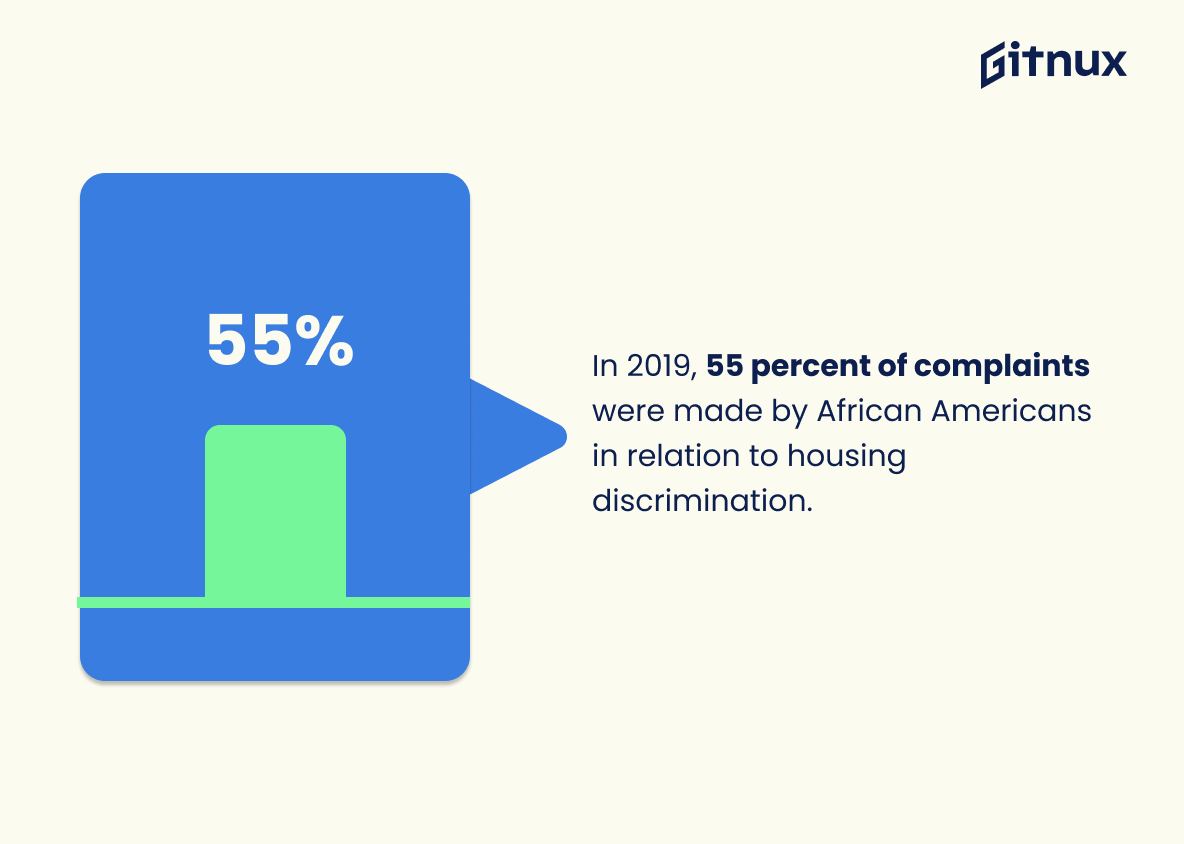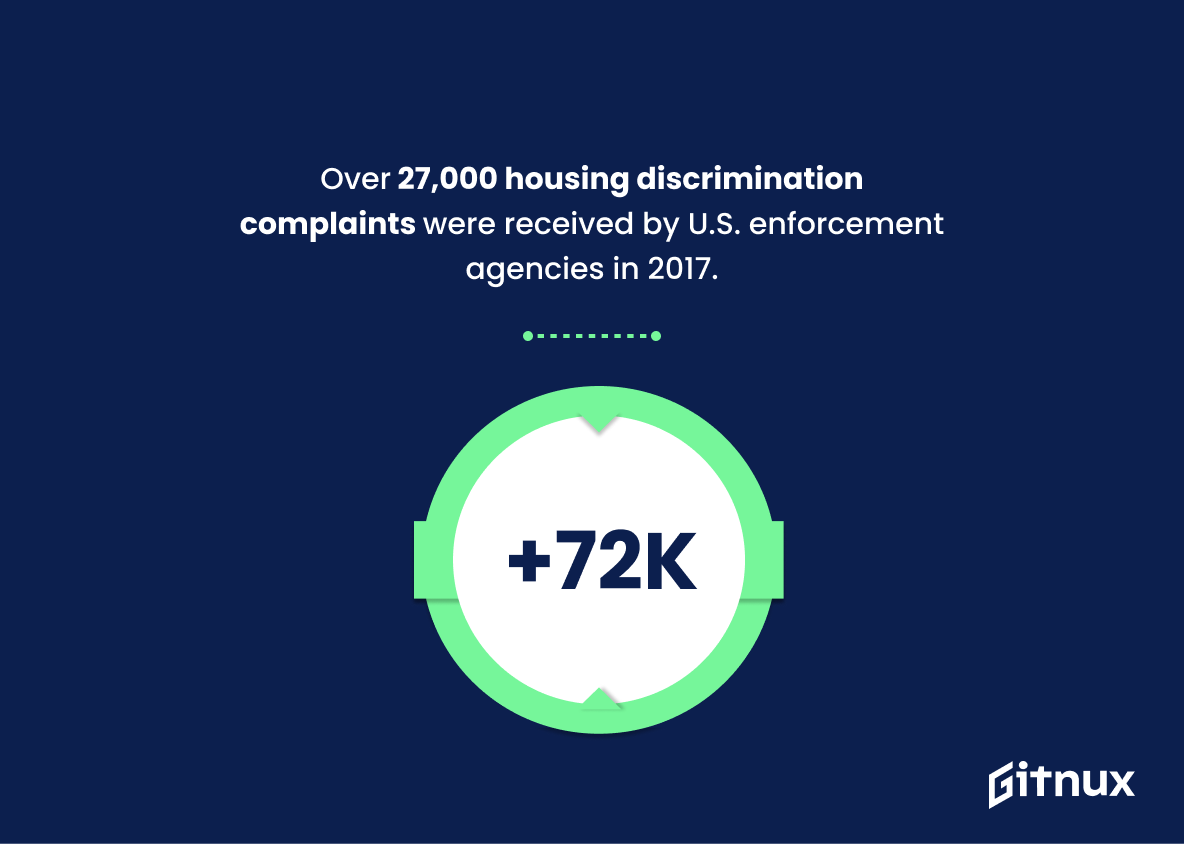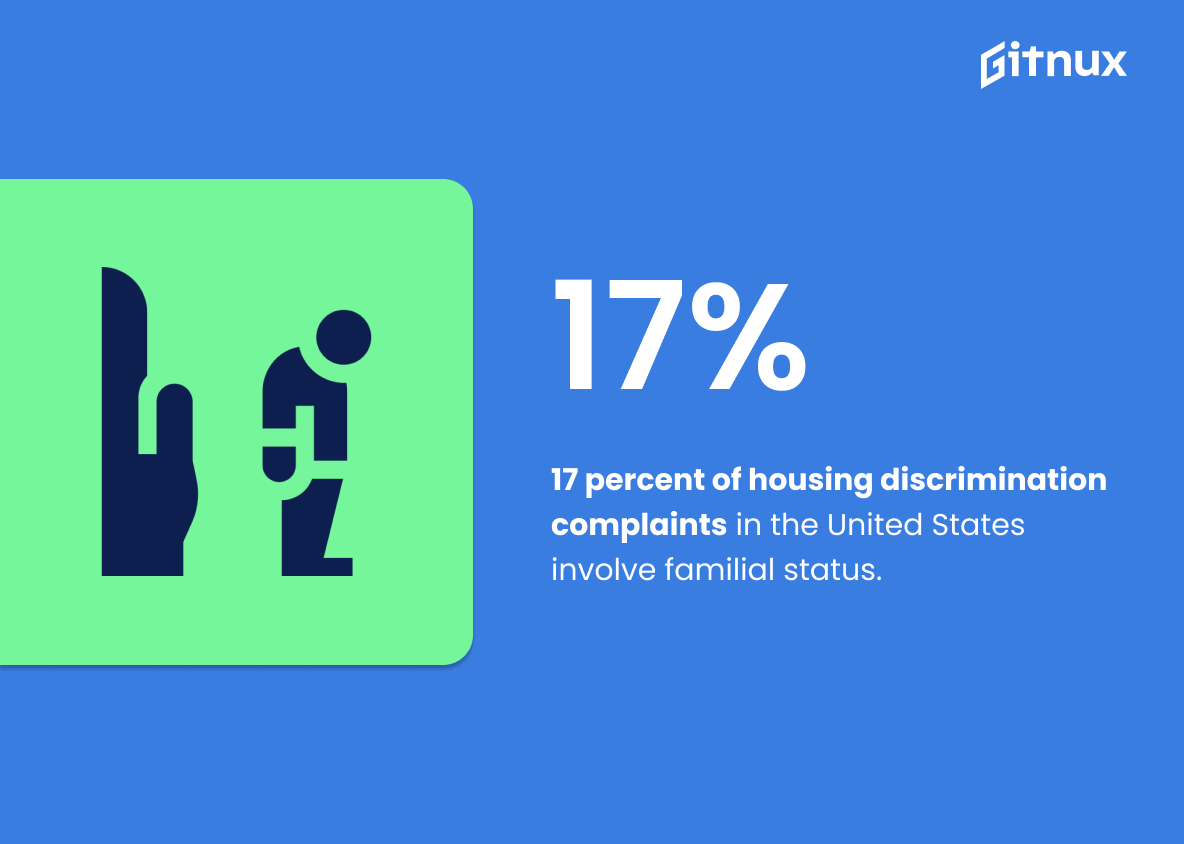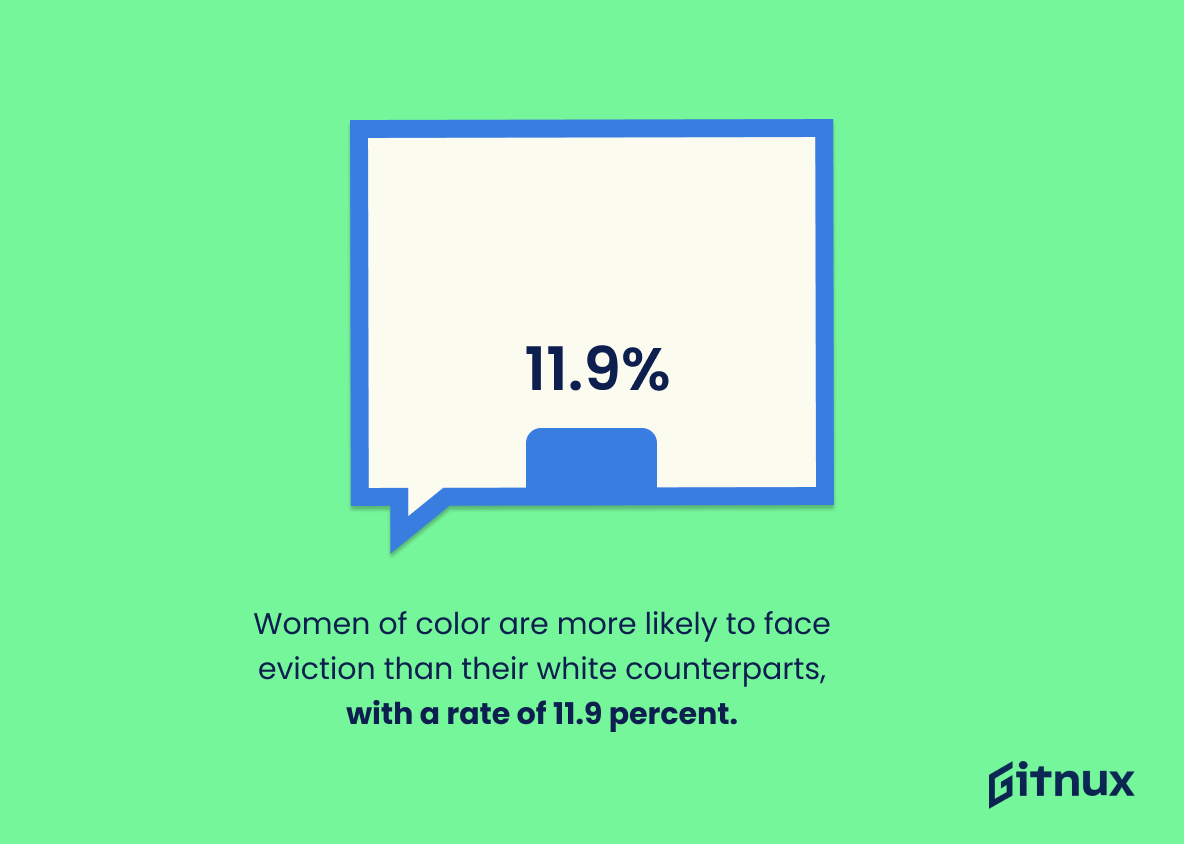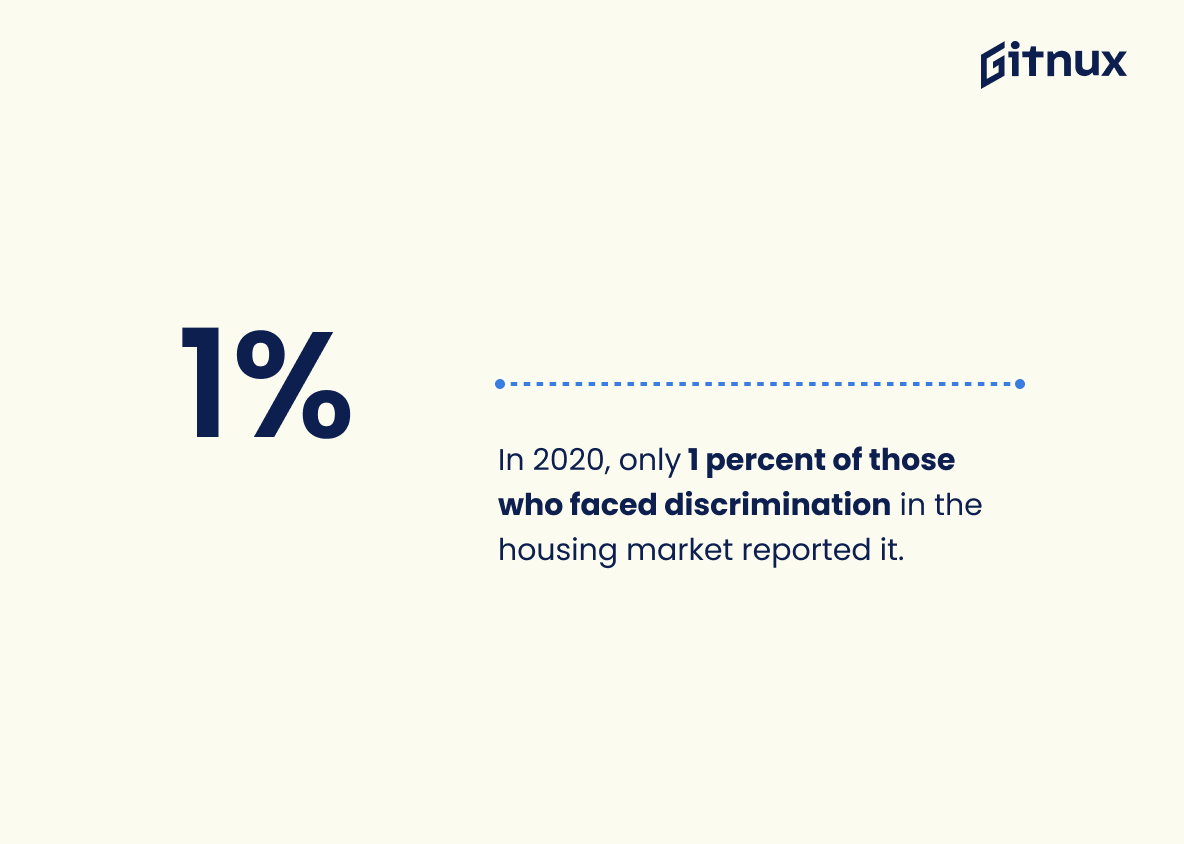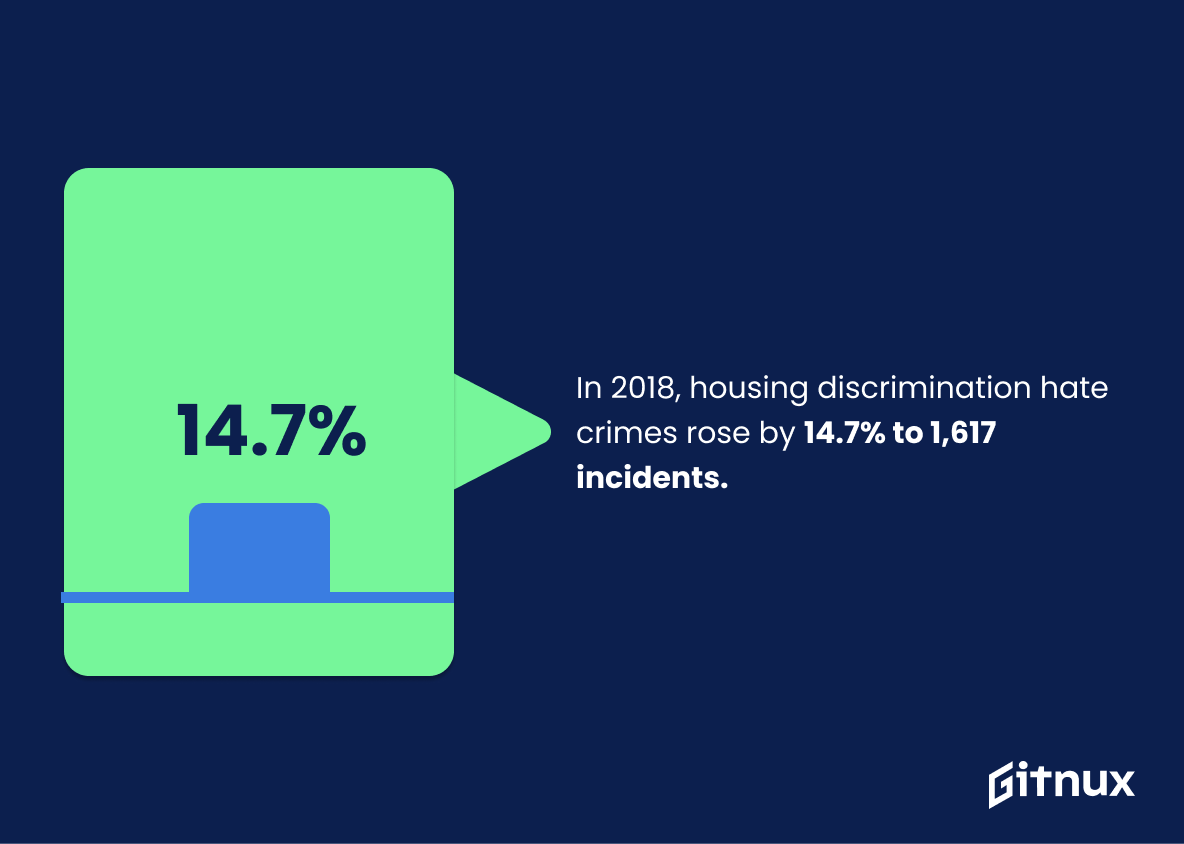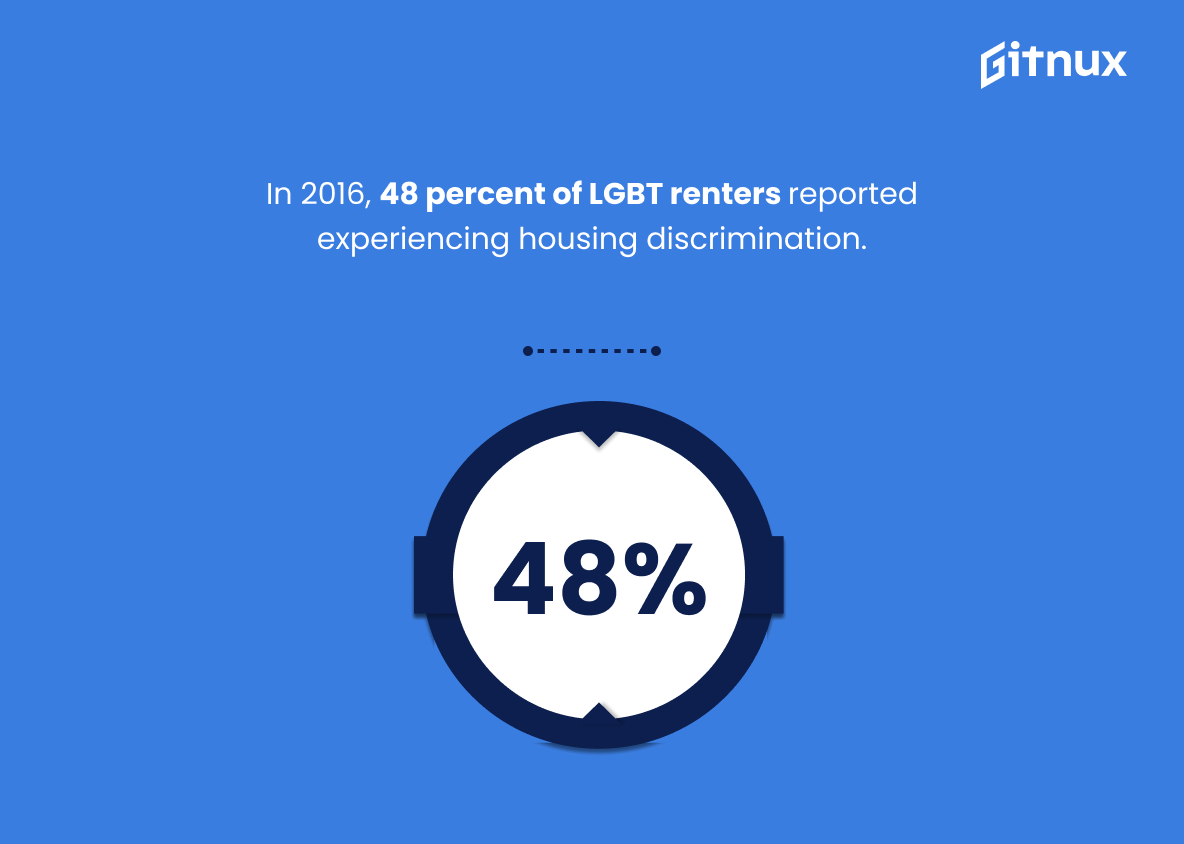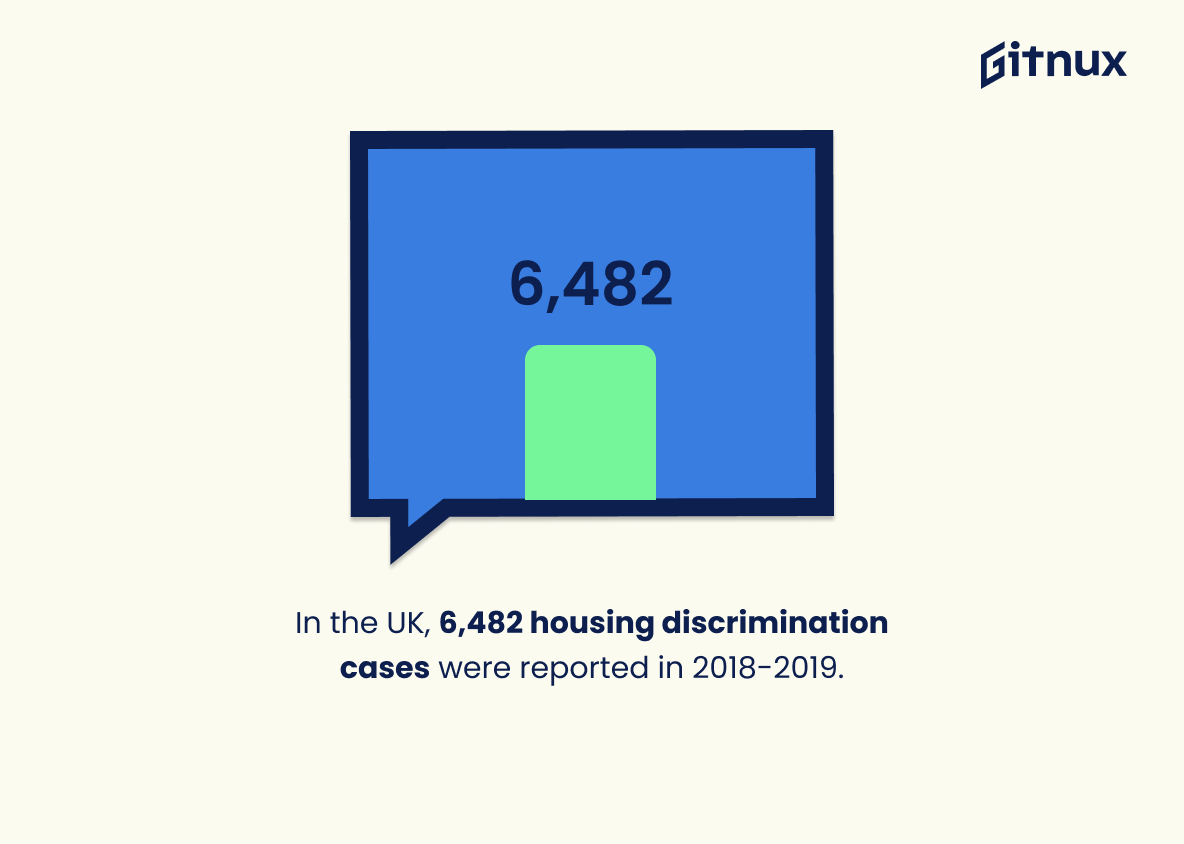Housing discrimination is a pervasive issue in the United States and around the world. Despite laws that protect individuals from being discriminated against based on their race, ethnicity, gender identity, sexual orientation or disability status when it comes to housing opportunities, millions of people still face unfair treatment each year. In this blog post we will explore some of the statistics related to housing discrimination in both the U.S. and abroad so that readers can gain an understanding of how widespread this problem really is.
In 2018 alone there were 28,878 fair housing complaints filed with 92 percent involving disability-related issues; 33.4 percent involved racial bias while 55 percent were made by African Americans due to discriminatory practices they experienced; 17 percent had familial status as its basis for complaint; 1 in 5 transgender individuals reported facing discrimination when seeking out rental properties; only 41% of all complaints about housing discrimination between 2010 and 2014 were investigated – resulting in 90% having no cause found upon investigation – and 48% LGBT renters reporting experiencing such prejudice during 2016-2017 period . The UK also saw 6482 cases reported over 2018/19 timeframe indicating global nature of this challenge which needs urgent attention from policy makers across countries alike..
This statistic is a stark reminder of the prevalence of housing discrimination in the United States. It highlights the fact that racial and ethnic minorities are disproportionately affected by this form of discrimination, and that it is a pervasive issue that needs to be addressed. It is a call to action for those who are in a position to make a difference and to ensure that everyone has access to fair and equitable housing.
Hispanic households experience the highest rate of housing discrimination, at a rate of 14.3 percent.
This statistic is a stark reminder of the reality that Hispanic households face when it comes to housing discrimination. It is a sobering reminder that, despite progress in other areas, there is still a long way to go in terms of ensuring that all people have access to fair and equitable housing opportunities. This statistic serves as a call to action to address the systemic issues that lead to such a high rate of discrimination against Hispanic households.
Housing Discrimination Statistics Overview
One in five transgender individuals experience housing discrimination in the United States.
This statistic is a stark reminder of the reality that transgender individuals face in the United States. It highlights the fact that housing discrimination is still a major issue in the country, and that it disproportionately affects transgender individuals. This statistic is an important part of the conversation about housing discrimination, and it should be taken into account when discussing the issue.
Only 41 percent of all complaints about housing discrimination were investigated between 2010 and 2014.
This statistic is a stark reminder of the prevalence of housing discrimination in our society. It highlights the fact that, despite the efforts of many to combat this issue, the majority of complaints are not being investigated. This is a concerning statistic that should be addressed in order to ensure that everyone has access to safe and secure housing.
28,878 fair housing complaints were filed in 2018, with the majority being disability-related.
This statistic is a stark reminder of the prevalence of housing discrimination in the United States. It highlights the fact that disability-related complaints are the most common type of housing discrimination, and that this is an issue that needs to be addressed. It also serves as a call to action for those who are in a position to make a difference and ensure that everyone has access to fair housing.
33.4 percent of housing discrimination complaints in 2020 were race-based.
This statistic is a stark reminder of the prevalence of race-based housing discrimination in 2020. It highlights the need for greater awareness and action to combat this issue, and serves as a call to arms for those who are passionate about creating a more equitable society.
In 2019, 55 percent of complaints were made by African Americans in relation to housing discrimination.
This statistic is a stark reminder of the prevalence of housing discrimination against African Americans in 2019. It highlights the need for further action to be taken to ensure that all people have access to fair and equal housing opportunities. It also serves as a call to action for those in positions of power to take steps to address this issue and ensure that everyone is treated fairly and equally.
Over 27,000 housing discrimination complaints were received by U.S. enforcement agencies in 2017.
This statistic is a stark reminder of the prevalence of housing discrimination in the United States. It highlights the fact that, despite the progress made in recent years, there is still a long way to go in terms of ensuring equal access to housing for all. The sheer number of complaints received in 2017 is a testament to the fact that housing discrimination is still a major issue in the country.
17 percent of housing discrimination complaints in the United States involve familial status.
This statistic is a stark reminder of the prevalence of housing discrimination based on familial status in the United States. It highlights the fact that families, particularly those with children, are disproportionately affected by housing discrimination and are more likely to experience it than other groups. This statistic is a call to action for policy makers, landlords, and other stakeholders to take steps to ensure that all families have access to safe and affordable housing.
Women of color are more likely to face eviction than their white counterparts, with a rate of 11.9 percent.
This statistic is a stark reminder of the systemic racism that exists in the housing market. It highlights the fact that women of color are disproportionately affected by eviction, and that they are more likely to face the consequences of housing discrimination than their white counterparts. This statistic is a call to action to address the underlying issues that lead to such disparities in the housing market.
In 2020, only 1 percent of those who faced discrimination in the housing market reported it.
This statistic is a stark reminder of the prevalence of housing discrimination in our society. It indicates that the vast majority of those who experience discrimination in the housing market remain silent, either out of fear of retribution or lack of awareness of their rights. This statistic is a call to action for those in positions of power to take steps to ensure that all individuals have access to fair and equitable housing opportunities.
In 2018, the number of reported hate crimes based on housing discrimination increased by 14.7 percent, with 1,617 incidents reported.
This statistic is a stark reminder of the prevalence of housing discrimination in the United States. The 14.7 percent increase in reported hate crimes based on housing discrimination is a troubling indication that this form of discrimination is on the rise. The 1,617 incidents reported in 2018 demonstrate the need for greater awareness and action to combat this issue.
In 2016, 48 percent of LGBT renters reported experiencing housing discrimination.
This statistic is a stark reminder of the reality that LGBT renters face when it comes to housing discrimination. It highlights the fact that even in this day and age, LGBT individuals are still facing discrimination when it comes to finding a place to live. This statistic serves as a call to action to ensure that all individuals, regardless of their sexual orientation, are treated fairly and equally when it comes to housing.
African-American renters are 25 percent more likely to experience housing discrimination than white renters.
This statistic is a stark reminder of the systemic racism that exists in the housing market. It highlights the fact that African-American renters are disproportionately affected by housing discrimination, and that this discrimination is a major issue that needs to be addressed. This statistic is an important part of the conversation about housing discrimination, and it should be taken into account when discussing the issue.
Approximately 6,482 housing discrimination cases were reported in the United Kingdom between 2018 and 2019.
This statistic is a stark reminder of the prevalence of housing discrimination in the United Kingdom. It serves as a reminder that this issue is still a major problem in the country, and that more needs to be done to address it. It also highlights the need for greater awareness of the issue, and for more resources to be devoted to tackling it.
Conclusion
The statistics presented in this blog post demonstrate the prevalence of housing discrimination across a variety of demographics. Racial and ethnic minorities face 4 million instances of housing discrimination each year, with Hispanic households experiencing the highest rate at 14.3 percent. Disability-related complaints make up 92 percent of all reported cases, while one in five transgender individuals experience some form of housing discrimination as well. Additionally, African Americans are 25 percent more likely to experience such forms of prejudice than white renters when it comes to finding suitable accommodation.
These figures highlight an urgent need for greater awareness and action against discriminatory practices within the rental market – both domestically and internationally – so that everyone can have access to safe and secure living conditions regardless their race or background.
References
0. – https://www.hud.gov
1. – https://www.npr.org
2. – https://www.transequality.org
3. – https://www.nlihc.org
4. – https://www.nar.realtor
5. – https://www.lgbtmap.org
6. – https://www.evictionlab.org
7. – https://www.urban.org
8. – https://www.equalityhumanrights.com
9. – https://www.nationalfairhousing.org
10. – https://www.ucr.fbi.gov
11. – https://www.ncbi.nlm.nih.gov

